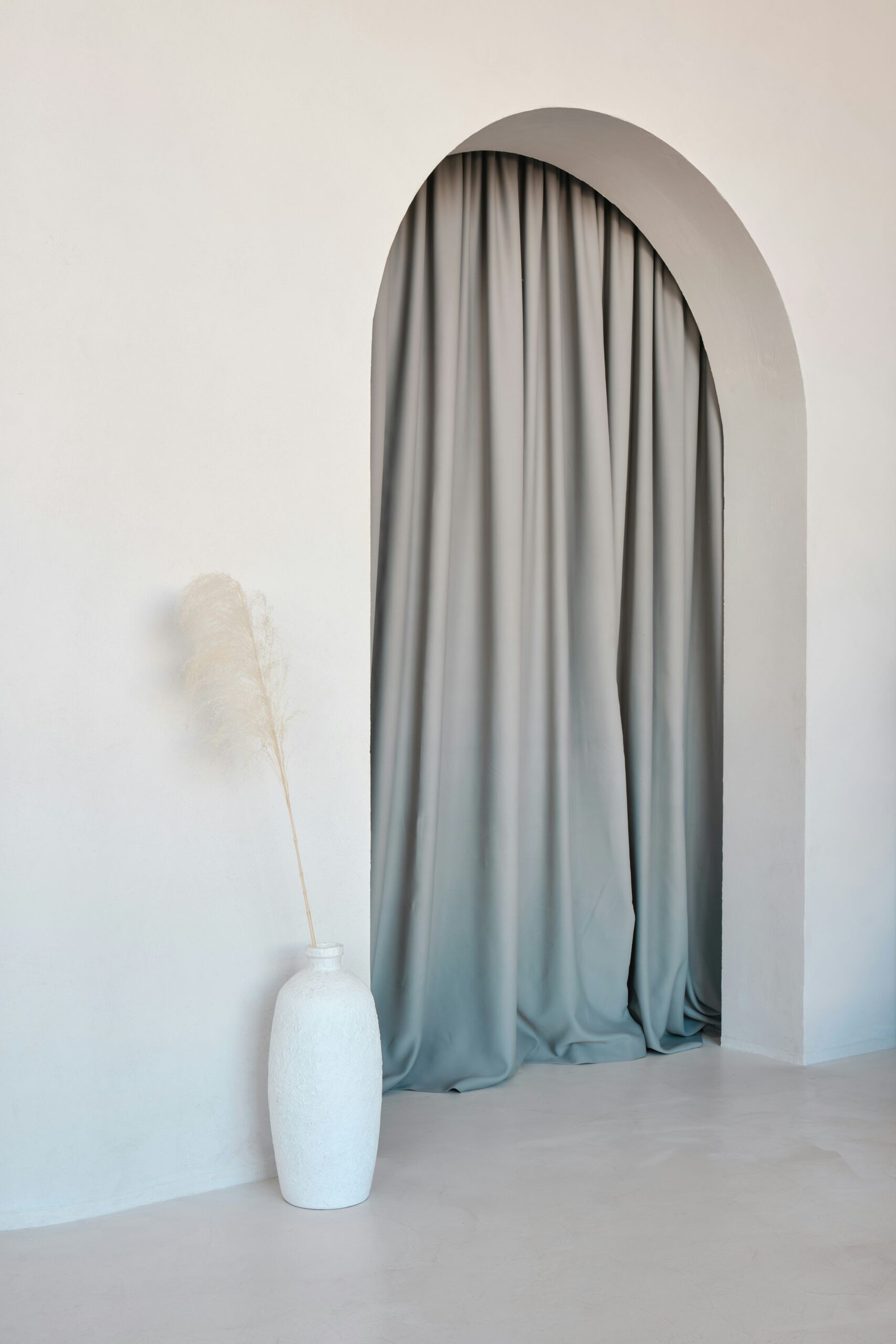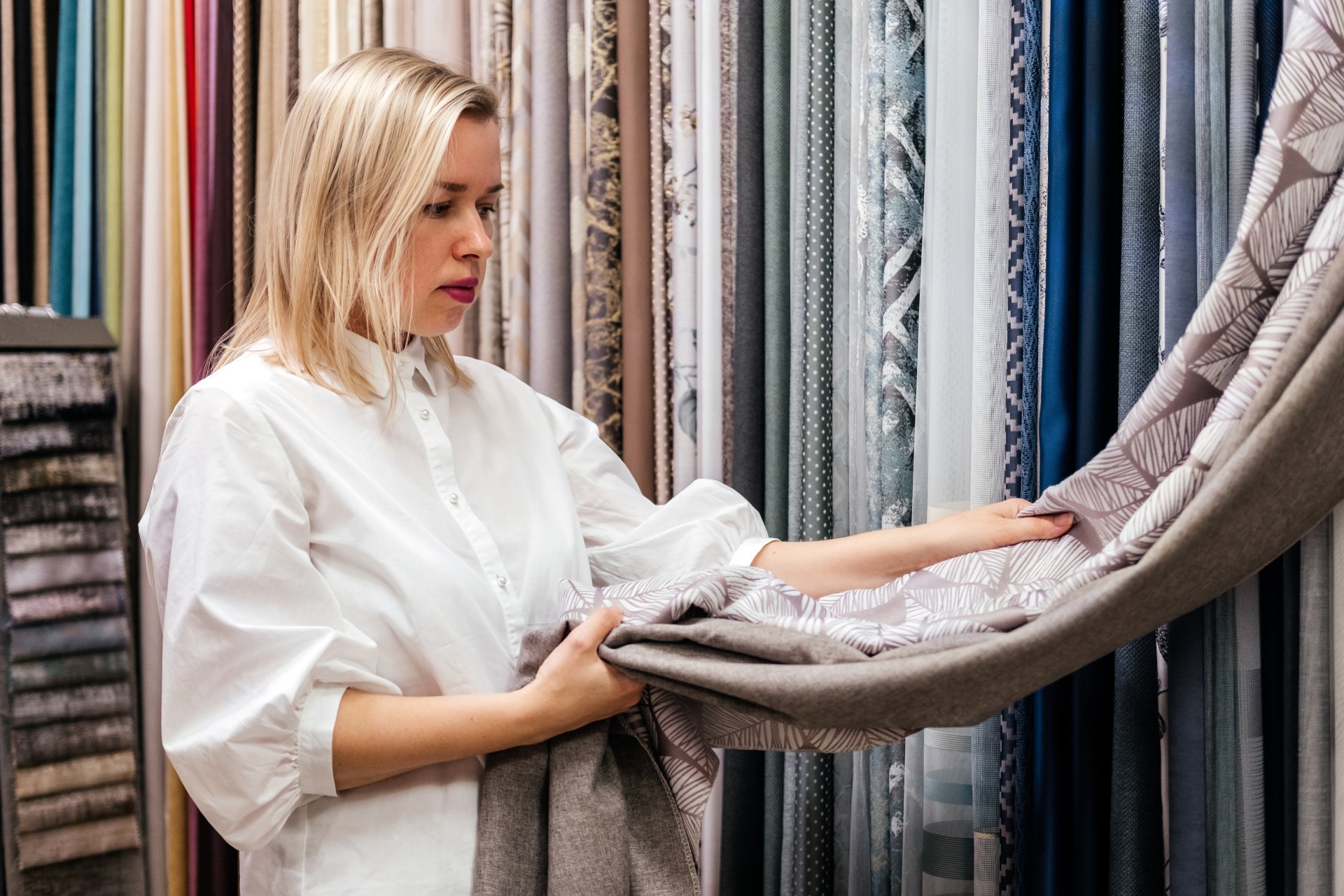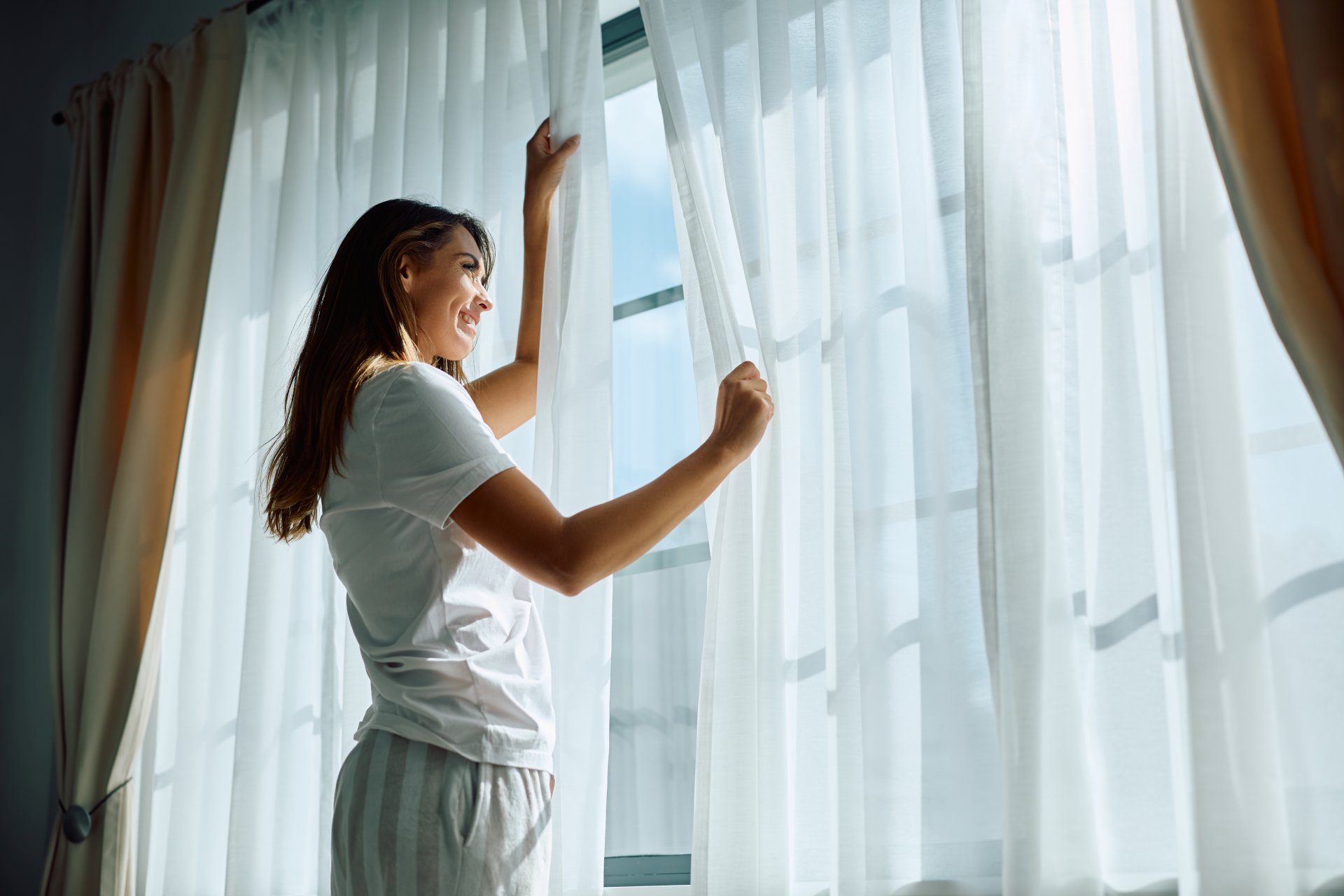Sound plays a major role in shaping our daily environments. In both residential and commercial spaces, managing noise effectively is essential for comfort, concentration, and overall well-being. As urban areas grow and open-plan designs become more common, the demand for sound-absorbing curtains has surged. Acoustic curtains provide an effective solution to noise control while maintaining a stylish and functional aesthetic.
This article explores the growing demand for acoustic curtains in homes, offices, and hospitality settings, detailing how these specially designed curtains work, the key fabric choices available in Australia, and how to select the right options from leading curtain wholesalers for different spaces.

Understanding Acoustic Curtains: How They Work
Acoustic curtains are engineered to absorb, reflect, or block sound waves, reducing noise transmission between spaces. Unlike standard curtains, which primarily serve decorative and light-blocking purposes, these curtains are made from densely woven, multi-layered fabrics designed to enhance soundproofing properties.
Sound absorption is measured using the noise reduction coefficient, a rating that determines how much sound energy is absorbed by a material. A higher noise reduction coefficient rating indicates better sound absorption, making acoustic curtains an effective option for reducing echo and background noise.
Several factors contribute to their performance. Fabric density and thickness play a crucial role, as heavier, tightly woven fabrics absorb more sound. Multiple layers improve sound absorption by creating a barrier that reduces sound transmission. A full-length design and deep pleating help create better sound diffusion, while proper installation ensures that the curtains fit snugly over windows or walls to prevent sound leakage.
The effectiveness of acoustic curtains also depends on the type of noise being controlled. Low-frequency sounds, such as traffic noise and deep bass from music, are harder to block, requiring denser fabrics or additional soundproofing measures. High-frequency sounds, such as voices and phone ringing, are more easily absorbed by standard acoustic curtains.
The Growing Demand for Acoustic Curtains in Different Spaces
As noise pollution becomes an increasing concern, more homes, offices, and hospitality venues are turning to acoustic curtains as a practical solution. They not only improve sound quality within a space but also contribute to energy efficiency and interior design aesthetics.
Residential Homes: A Quieter Living Experience
In residential settings, noise reduction is essential for creating a peaceful and comfortable environment. With growing urbanisation, many homes experience external noise from traffic, construction, and neighbours, making soundproofing solutions more relevant than ever.
Bedrooms are among the most common areas where homeowners use acoustic curtains. External noise can interfere with sleep quality, especially for those living near busy streets or in apartment complexes. Thick, layered curtains help create a serene atmosphere, blocking out unwanted sound and improving overall rest.
Home theatres benefit significantly from sound-absorbing curtains. Reducing echo and preventing sound leakage enhances the cinematic experience by improving sound clarity and reducing disturbances to other parts of the house. Similarly, open-plan living areas, which have become a popular design choice, often struggle with excessive reverberation. Acoustic curtains help manage noise levels in these spaces, particularly in homes with high ceilings or hardwood flooring.

Corporate and Office Spaces: Enhancing Productivity
Modern offices are designed for collaboration, but excessive noise can reduce focus and productivity. The rise of open-plan offices has led to an increase in noise-related distractions, prompting businesses to seek solutions that maintain a dynamic workspace while ensuring sound control.
Meeting rooms require privacy, and sound-absorbing curtains help contain conversations within the space. This is particularly important in industries where confidentiality is crucial, such as finance, law, and healthcare.
Co-working spaces also benefit from acoustic partitions created with heavy drapes. These curtains define work zones while controlling sound, allowing for flexible space management. In offices with glass walls, noise travels freely, making it difficult to create quiet areas for focused work. Installing acoustic curtains around glass partitions helps dampen echo and improve privacy without compromising natural light.
Hospitality and Commercial Settings: Creating the Right Atmosphere
Restaurants, hotels, and event venues require a balance of style and functionality. Acoustic curtains contribute to an inviting ambiance while controlling excess noise, ensuring that guests can enjoy a pleasant experience.
Hotels use soundproof curtains to enhance guest comfort, particularly in rooms facing busy streets, airports, or entertainment precincts. These curtains block external noise while also providing privacy and light control, making them a valuable feature in luxury and business accommodations.
Restaurants and cafes often struggle with excessive noise levels due to hard surfaces, open layouts, and high customer turnover. Acoustic curtains reduce background noise, making conversation more enjoyable for diners. This is especially useful in fine dining establishments, where creating an intimate atmosphere is essential.
Theatres and auditoriums rely heavily on acoustic design. High-density curtains improve sound quality by preventing reflections and ensuring clear audio delivery. In event spaces and conference halls, large, heavy curtains help reduce echo and improve speech intelligibility for presentations and performances.

Key Fabric Choices for Acoustic Curtains in Australia
Australia has strict standards for building acoustics and interior textiles, making it important to choose high-performance acoustic curtain fabrics that meet both aesthetic and functional needs. Some of the best fabric options available for soundproofing curtains include a variety of materials designed to absorb sound while complementing different interior styles.
Velvet and Velour
Velvet and velour are among the most effective fabrics for sound absorption due to their thick, plush composition and dense pile. The surface texture of these fabrics helps trap sound waves, reducing echo and reverberation in a space. The weight of velvet and velour further contributes to their soundproofing properties, making them a preferred choice for settings that require both functionality and a touch of luxury.
These fabrics are commonly used in theatres, home cinemas, and luxury hotels where controlling ambient noise is essential for creating an immersive experience. In addition to their acoustic benefits, velvet and velour add depth and richness to interiors, making them an attractive choice for spaces where aesthetics matter as much as performance.
Wool and Wool-Blend Fabrics
Wool and wool-blend fabrics are highly effective for soundproofing due to their natural density and excellent thermal insulation properties. Wool is known for its ability to absorb and dampen sound waves, making it an ideal choice for reducing noise transmission in offices, boardrooms, and co-working spaces.
In addition to its acoustic properties, wool is fire-resistant, a crucial factor for commercial settings where safety regulations must be met. Wool-blend fabrics offer a more cost-effective alternative while maintaining many of the benefits of natural wool. Hotels and corporate spaces often incorporate wool-based acoustic curtains to improve privacy and comfort while enhancing the professional appearance of the environment.
Triple-Weave and Thermal Blockout Fabrics
Triple-weave fabrics consist of multiple layers of tightly woven material, significantly improving soundproofing and thermal insulation. The construction of these fabrics helps block noise while maintaining indoor temperature stability, making them particularly effective in residential and hospitality settings.
These fabrics are popular in bedrooms, apartments, and hotels where reducing both external noise and energy consumption is a priority. Homeowners looking for a balance between soundproofing, privacy, and energy efficiency often choose triple-weave curtains, which provide an effective barrier against sound while helping to regulate indoor temperatures.
Heavy-Duty Polyester and Polyester Blends
Polyester and polyester-blend fabrics with PVC or acrylic coatings provide an effective, durable solution for noise reduction in commercial spaces. These materials are often chosen for their lightweight construction and cost-effectiveness, making them ideal for large-scale projects such as hotels, restaurants, and event venues.
The synthetic nature of polyester makes it resistant to moisture and wear, ensuring long-term durability with minimal maintenance. While polyester curtains may not offer the same level of acoustic absorption as wool or velvet, they can be layered with other materials or linings to improve their effectiveness in sound control.
Multi-Layered Acoustic Fabrics
For maximum soundproofing, some acoustic curtains are designed with multiple layers of fabric, dense foam cores, or thermal linings. These specialized curtains provide superior noise reduction, often achieving a significant decrease in sound transmission.
Multi-layered acoustic curtains are commonly used in recording studios, auditoriums, and large venues where controlling sound reflection and minimizing external noise are critical. They are engineered for high-performance sound absorption, making them one of the best options for professional and commercial environments requiring advanced acoustic management.
Selecting the Right Acoustic Curtains for Your Space
Choosing the right acoustic curtains requires careful consideration of the specific needs of the space. Fabric weight and density are critical, as heavier fabrics with tight weaves perform better in sound absorption. Curtain length and coverage should be optimised, with floor-to-ceiling designs and deep pleats enhancing effectiveness.
Lining options also play a role, as combining different fabric layers or adding thermal linings improves acoustic insulation. In commercial settings, it is important to select curtains that meet fire and safety compliance standards. Motorisation and automation are additional features to consider, especially in smart offices and hospitality environments where seamless control over natural light and sound is required.
Style Meets Function with MAC Window Fashions Acoustic Curtains
Acoustic curtains offer an elegant yet practical solution for noise control in homes, offices, and hospitality settings. With a wide range of premium fabrics available in Australia, from luxurious velvets to energy-efficient triple-weave designs, these curtains not only enhance acoustics but also contribute to interior design, energy efficiency, and overall comfort.
Whether you are looking to create a peaceful home retreat, improve productivity in a busy office, or enhance guest experiences in a hotel or restaurant, investing in high-quality acoustic curtains ensures both style and functionality.
For businesses and homeowners seeking custom acoustic curtain solutions, working with trusted Australian suppliers ensures superior craftsmanship and compliance with local standards. The right acoustic curtains can make a substantial difference in reducing noise levels while complementing the aesthetic vision of any space.
Work with MAC Window Fashions to deliver luxury noise-reducing curtains designed for residential, commercial, and hospitality spaces. Our Australian-made certified curtains combine superior acoustic performance with exceptional craftsmanship. Become a MAC partner today to offer high-quality soundproofing solutions, or work with a MAC retail partner to bring expertly designed acoustic curtains to your clients.




